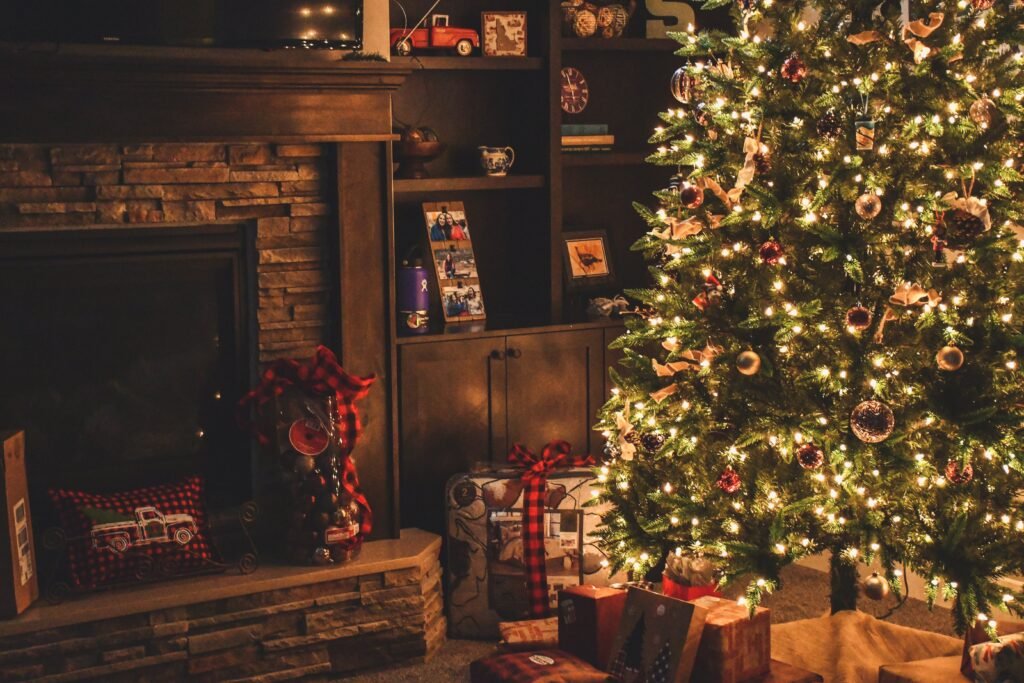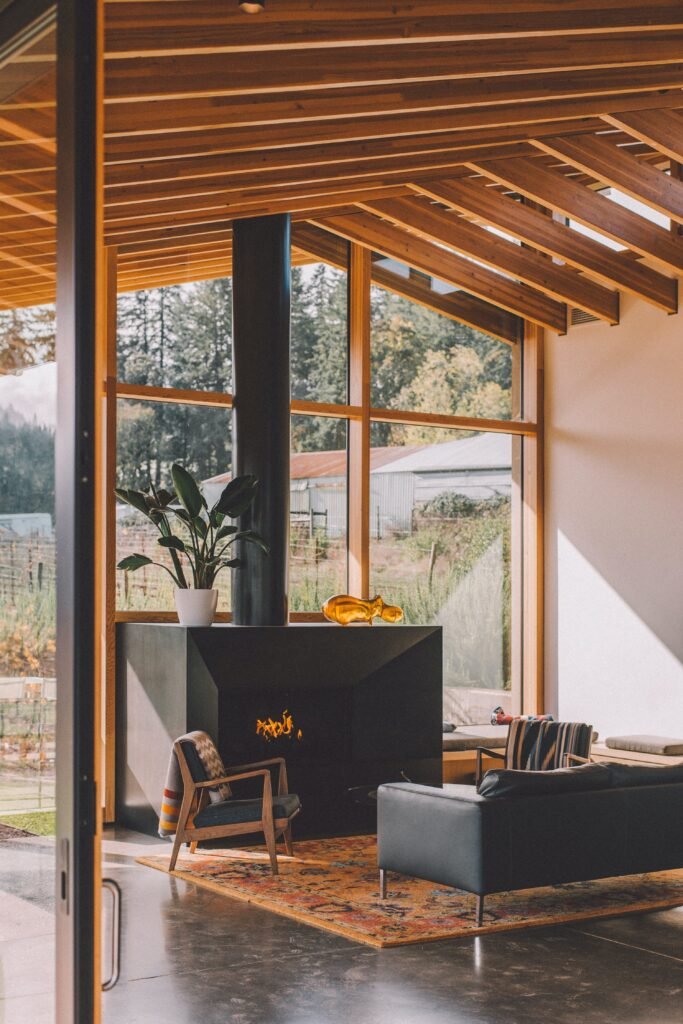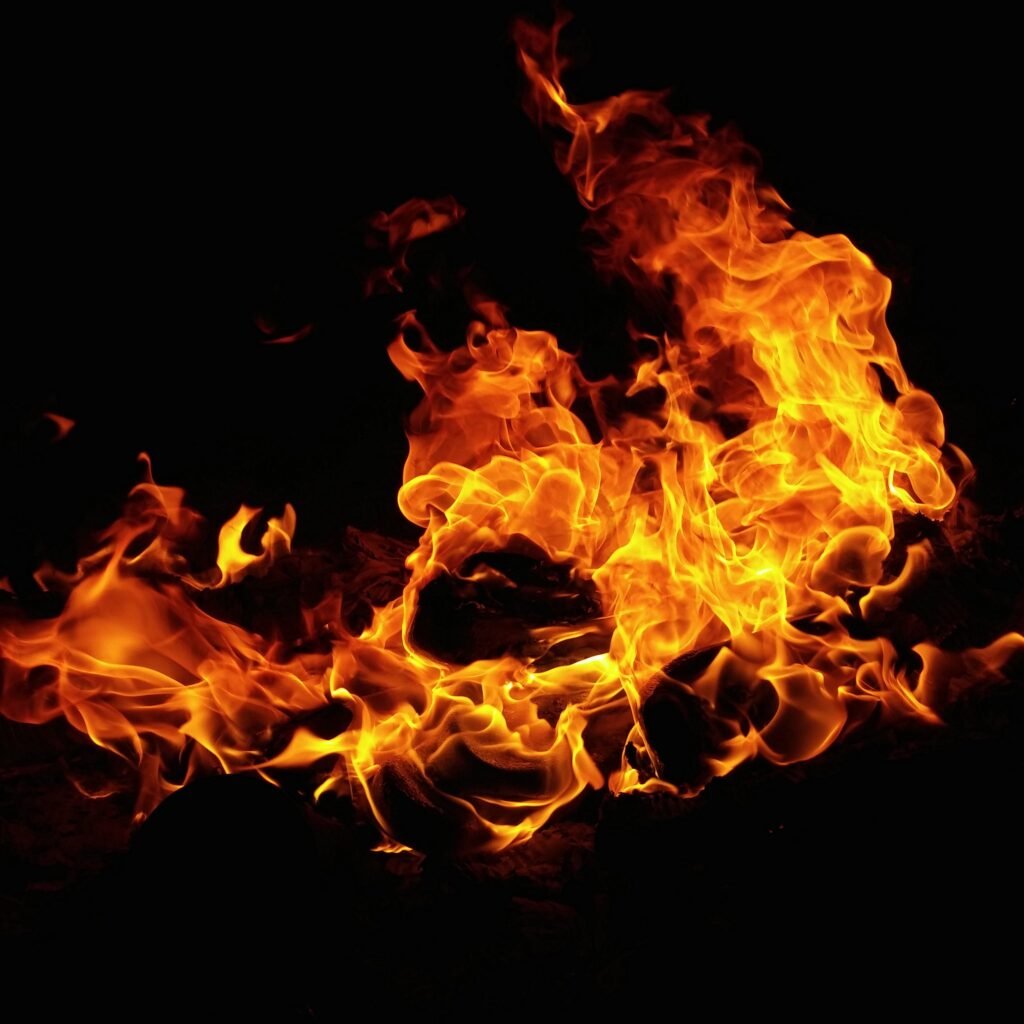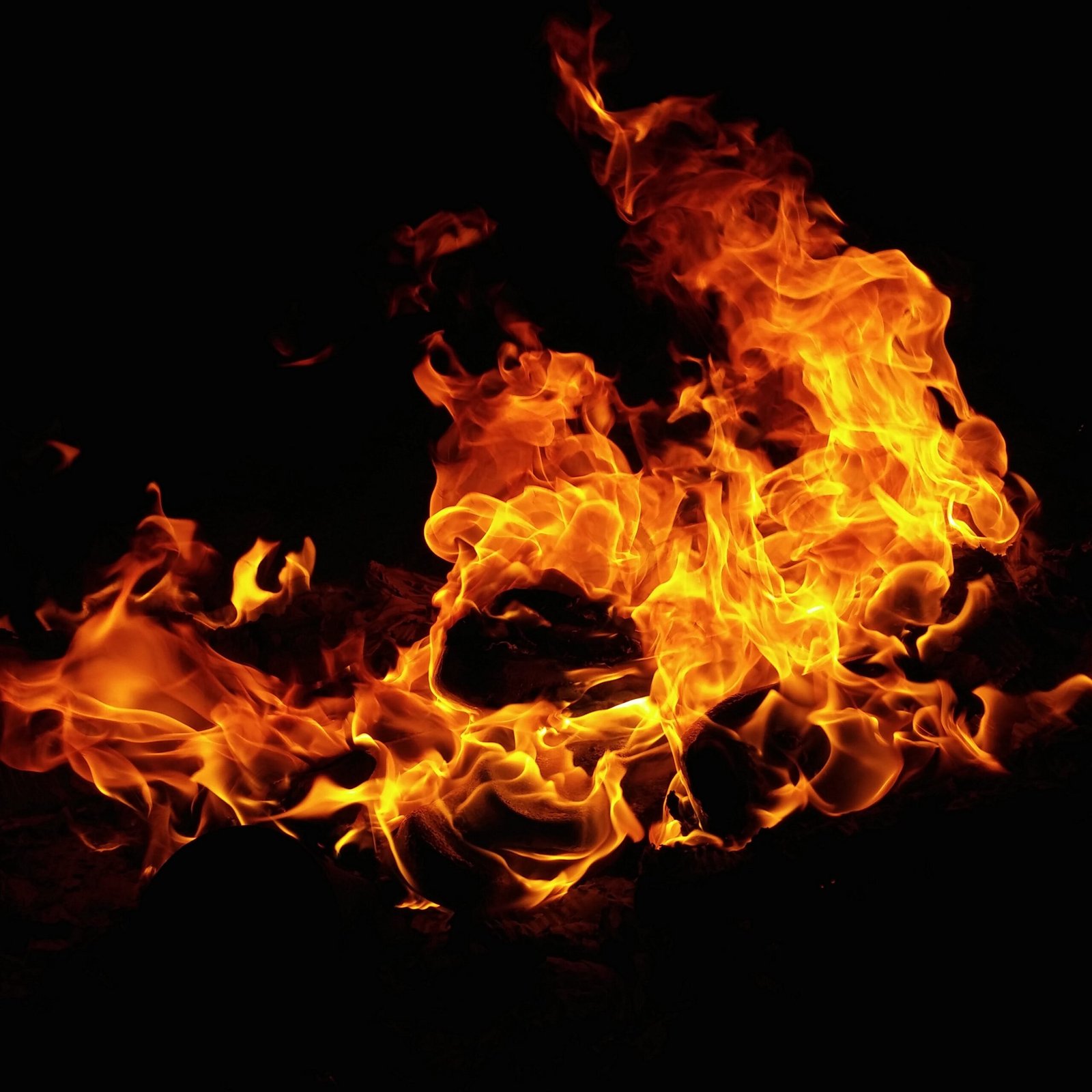Are you ready to cozy up by your fireplace this winter? Before you snuggle in with a warm blanket and a hot cup of cocoa, it’s essential to ensure that your fireplace is in tip-top shape. In this article, we will explore practical tips for maintaining a soot-free fireplace, so you can enjoy the warmth and beauty of a crackling fire without the hassle of excessive cleaning. From simple cleaning techniques to preventive measures, we’ve got you covered. Get ready to make your fireplace the focal point of your home this season!

This image is property of images.pexels.com.
Preventive Measures
Regular Chimney Inspection
Regular chimney inspections are crucial to maintain the safety and efficiency of your fireplace. It is recommended to have a professional chimney sweep inspect your chimney at least once a year. They can identify any potential issues such as cracks, blockages, or damaged chimney liners that could lead to fires or carbon monoxide leaks. By addressing these problems early on, you can prevent costly repairs and ensure the longevity of your fireplace.
Proper Fireplace Design
Having a proper fireplace design is essential for both aesthetics and functionality. When designing or renovating your fireplace, consider the size and dimensions of the room, as well as the placement of windows and doors. Properly designed fireplaces have a chimney that is appropriately sized and positioned to provide efficient venting and prevent smoke from entering your living space.
Installation of a Chimney Cap
Installing a chimney cap is a simple yet effective preventive measure. A chimney cap acts as a barrier, preventing animals, debris, and rainwater from entering your chimney. It also helps to minimize downdrafts and reduce the amount of soot build-up in your chimney. Regularly inspect the chimney cap to ensure it is in good condition and replace it if necessary.
Burning Techniques
Use Seasoned Firewood
Using seasoned firewood is crucial for efficient and clean burning. Seasoned firewood has been properly dried for at least six months, reducing its moisture content. When burning seasoned firewood, you will experience less smoke and soot, as well as more heat output. Avoid using freshly cut or green wood, as it tends to produce more smoke and soot while generating less heat.
Avoid Overloading the Fireplace
It’s important to avoid overloading your fireplace with too much firewood. Overloading can restrict airflow and prevent proper combustion, leading to incomplete burning and increased soot production. Follow the manufacturer’s recommendations for the maximum amount of firewood that your fireplace can handle at once.
Establish a Small, Hot Fire
To minimize the production of soot and maximize heat output, it is recommended to establish a small, hot fire. By using smaller pieces of firewood and ensuring that the fire is hot, you facilitate more complete combustion and reduce the amount of smoke and soot produced. Once the fire is established and burning hot, you can gradually add larger pieces of firewood.
Maintain Adequate Airflow
Proper airflow is crucial for efficient burning and minimizing soot production. Make sure the dampers and vents are open to allow adequate oxygen supply for combustion. Additionally, keep the area around the fireplace clear of furniture, drapes, or other objects that could obstruct the airflow. Maintaining adequate airflow will allow the fire to burn more cleanly and decrease the likelihood of excessive soot buildup.
Cleaning and Removing Soot
Use a Chimney Sweep
Regularly hiring a professional chimney sweep to clean your chimney is essential for maintaining a soot-free fireplace. A chimney sweep will thoroughly remove any built-up creosote, soot, or debris within the chimney. This not only reduces the risk of chimney fires but also promotes proper venting and improves the efficiency of your fireplace. Consider scheduling chimney sweeps at least once a year or as recommended by a professional.
Cleaning the Firebox
Cleaning the firebox is a necessary part of maintaining a soot-free fireplace. Use a fireplace shovel and ash bucket to remove any ashes and debris from the firebox. Make sure to wear protective gloves and a mask to avoid contact with soot and ash particles. Additionally, wipe down the inner walls of the firebox using a damp cloth to remove any remaining soot. Regular cleaning of the firebox will help prevent the accumulation of soot and ensure better combustion.
Removing Soot Stains on Walls
Over time, soot can accumulate on the walls surrounding your fireplace. To remove soot stains, mix a solution of warm water and mild detergent. Dip a sponge or cloth into the solution and gently scrub the affected areas. Rinse with clean water and dry thoroughly. Be cautious not to scrub too hard or use abrasive cleaners, as they can damage the wall surface. Regularly cleaning soot stains on walls will help maintain a clean and inviting fireplace area.
Maintaining Chimney and Fireplace Venting
Inspect the Chimney Cap
Inspecting the chimney cap regularly is important to ensure proper venting and prevent unwanted debris or animals from entering your chimney. Look for any signs of damage, such as cracks or missing parts. Ensure that the chimney cap is securely attached to prevent it from being dislodged during strong winds or storms. If any issues are detected, repair or replace the chimney cap promptly to avoid potential blockages.
Check Chimney Liner
The chimney liner plays a crucial role in protecting the masonry and ensuring proper venting. It is important to periodically check the condition of the chimney liner. Look for any signs of damage, deterioration, or cracks that could affect its performance. If any issues are found, consult a professional to determine whether repairs or replacement are necessary.
Clear Blockages
Blockages in your chimney can lead to improper venting, increased soot production, and even potential fire hazards. Regularly inspect your chimney for any blockages, such as bird nests, leaves, or debris. If you notice any obstructions, carefully remove them or contact a professional for assistance. Clearing blockages will help maintain proper airflow and prevent soot buildup in your chimney.
Clean the Fireplace Damper
The fireplace damper is responsible for controlling the airflow and heat output of your fireplace. Over time, it can become coated with soot and debris, hampering its functionality. Inspect the damper regularly and clean it using a brush or cloth to remove any accumulated soot. This will ensure smooth operation and prevent the buildup of soot around the damper area.

This image is property of images.pexels.com.
Proper Ash Removal
Wait for Complete Ash Cool-Down
Before removing ash from your fireplace, it is crucial to wait for complete cool-down. Hot embers can remain within the ash and pose a fire risk if not properly extinguished. Allow the ash to cool for at least 24 hours before attempting to remove it from the firebox.
Use Metal Ash Bucket and Shovel
Using a metal ash bucket and shovel is recommended for safe and efficient ash removal. Metal buckets are non-flammable and can handle the heat of the ash, reducing the risk of accidental fires. Use the shovel to carefully scoop the ash into the bucket, ensuring that no hot embers or debris are left behind.
Dispose of Ash Correctly
When disposing of ash, it is essential to do so properly to avoid fire hazards. Place the metal ash bucket in a safe, non-combustible area away from flammable materials. Avoid placing the bucket directly on wooden surfaces or near combustible substances. Once the ash is fully cooled, consider disposing of it in a metal container with a tight-fitting lid. This will prevent any accidental ignition and minimize the risk of fire.
Avoiding Unwanted Moisture
Repair Leaks and Cracks
Unwanted moisture can cause significant damage to your fireplace and chimney. Regularly inspect the fireplace and chimney for leaks or cracks that may allow water to enter. If any issues are detected, promptly repair them using appropriate sealants or materials. Properly maintaining your fireplace’s integrity will help prevent moisture-related problems and ensure its longevity.
Install Proper Ventilation
Proper ventilation is crucial for preventing moisture buildup and maintaining a healthy fireplace environment. Ensure that your fireplace has sufficient ventilation to allow moisture to escape. Consider installing vents or fans to facilitate the circulation of air and reduce the risk of condensation. Adequate ventilation will help prevent mold growth, rust, and other moisture-related problems.
Keep the Fireplace Dry
To avoid unwanted moisture, it is important to keep the fireplace area dry. Clean up any water spills or leaks promptly to prevent water from seeping into the fireplace and chimney. Avoid leaving wet firewood or other damp materials near the fireplace, as they can introduce moisture and contribute to soot and mold growth. Regularly monitoring the moisture levels in your fireplace area will help prevent potential damage.

This image is property of images.pexels.com.
Maintaining Firebox Health
Inspect Brickwork and Mortar
Regularly inspecting the brickwork and mortar of your firebox is crucial to maintain its longevity. Look for any signs of cracks, gaps, or loose bricks that may need repair or replacement. Damaged brickwork or mortar can lead to heat loss, improper combustion, and an increased risk of soot buildup. Address any issues promptly to ensure the structural integrity and functionality of your firebox.
Repair or Replace Damaged Bricks
If you notice any damaged bricks in your firebox, it is important to repair or replace them as soon as possible. Cracked or deteriorating bricks can disrupt proper combustion and contribute to soot production. Consult a professional if you are unsure how to repair or replace the damaged bricks. Proper maintenance of the firebox will ensure its longevity and enhance the safety of your fireplace.
Painting or Sealing the Firebox
To protect the brickwork and mortar of your firebox, consider painting or sealing it with appropriate materials. Painting the firebox with a high-temperature paint can provide an extra layer of protection and enhance its appearance. Alternatively, you can use a specialized sealant to protect the surface and prevent moisture absorption. Follow the manufacturer’s instructions and consult a professional if needed.
Keep the Firebox Clean
Regularly cleaning the firebox is essential for maintaining a clean and efficient fireplace. Use a fireplace shovel and ash bucket to remove any ashes and debris from the firebox. Wipe down the inner walls of the firebox using a damp cloth to remove any remaining soot. By keeping the firebox clean, you can prevent the accumulation of soot and ensure better combustion and heat output.
Safely Operating the Fireplace
Use Proper Fireplace Tools
Using the right tools when operating your fireplace is crucial for safety and efficiency. Ensure that you have a poker, tongs, and a sturdy brush specifically designed for fireplaces. These tools will allow you to adjust and maintain the fire without the risk of burns. Always use the tools with care and follow the manufacturer’s instructions for safe operation.
Fire Safety Measures
To ensure the safety of your home and loved ones, it is important to follow essential fire safety measures. Install smoke detectors and carbon monoxide detectors near your fireplace and regularly test them to ensure they are functioning correctly. Keep a fire extinguisher nearby in case of emergencies and familiarize yourself with its proper use. It is also advisable to have an escape plan in case of a fire and to practice it regularly with your family.
Never Leave Fire Unattended
It is crucial never to leave a fire unattended, even for a short period. Before leaving the room or going to bed, make sure to fully extinguish the fire and ensure that no embers are still smoldering. Properly close the damper and ensure that the fire is completely out. This will prevent the risk of accidental fires and ensure the safety of your home.
Keep Flammable Objects Away
To minimize the risk of accidental fires, keep flammable objects at a safe distance from the fireplace. Furniture, curtains, rugs, and other combustible materials should be kept away from the fireplace area. Make sure that no objects are hanging from the mantel or positioned close to the fire. By maintaining a clear and safe space around the fireplace, you can minimize the risk of fire hazards.
Regular Fireplace Inspections
Hire Professional Inspectors
Regularly hiring professional chimney inspectors is essential for comprehensive fireplace maintenance. Professional inspectors have the expertise and tools to thoroughly examine your fireplace, chimney, and venting system. They can identify potential issues, provide necessary repairs, and ensure that your fireplace meets safety standards. Consider scheduling annual professional inspections to maintain a safe and efficient fireplace.
Annual DIY Maintenance Checks
In addition to professional inspections, it is beneficial to perform regular DIY maintenance checks on your fireplace. Inspect the visible parts of your fireplace, including the firebox, damper, and chimney cap. Look for signs of wear, damage, or blockages. Soot buildup or a strong odor of smoke could indicate a need for maintenance. By regularly conducting these checks, you can address minor issues early on and ensure the longevity of your fireplace.
Additional Tips and Maintenance
Keep Pets and Children Away
When operating a fireplace, it is crucial to keep pets and children at a safe distance. Hot surfaces and flames can pose a significant risk of burns or injuries. Consider using a fireplace gate to create a physical barrier and prevent accidental contact. Always supervise children and pets when in the vicinity of the fireplace to ensure their safety.
Store Firewood Properly
Properly storing firewood is essential for maintaining its quality and preventing moisture buildup. Store firewood in a dry, well-ventilated area away from your home’s exterior walls. Keep it off the ground and preferably covered with a tarp to protect it from rain or snow. Additionally, it is important to bring firewood indoors a few hours before burning to ensure optimal dryness.
Maintain Carbon Monoxide Detectors
Carbon monoxide (CO) is a silent and deadly gas that can be produced by fireplaces. As part of maintaining a safe fireplace, it is crucial to install and regularly maintain carbon monoxide detectors. Test the detectors regularly to ensure they are functioning correctly and replace the batteries at least twice a year. Carbon monoxide detectors provide an essential layer of protection for you and your family.
Consider Using Fireplace Inserts
If you are looking to improve the efficiency of your fireplace, considering using fireplace inserts is worth exploring. Fireplace inserts are specially designed to fit into existing fireplaces, providing enhanced heat output and better combustion. They are also more environmentally friendly, producing less smoke and soot. Consult a professional to determine the most suitable fireplace insert for your needs.
By following these preventive measures, employing proper burning techniques, regularly cleaning and maintaining your fireplace, and adhering to essential safety practices, you can enjoy soot-free fires and maximize the safety and efficiency of your fireplace for years to come. With proper care and maintenance, your fireplace will be a warm and inviting focal point in your home, providing cozy ambiance without the hassle of excessive soot and potential risks.




